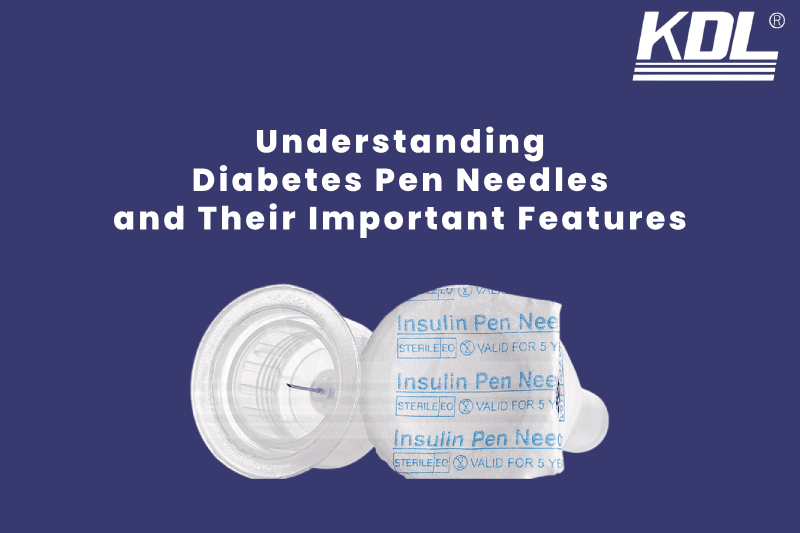
Each day, people with diabetes have to make decisions that help them keep their blood sugar in check. When compared to regular needles, diabetes pen needles are faster, easier to use, and more comfortable for many people. Despite being very important for safe and effective insulin delivery, the diabetes pen tip doesn’t get as much attention.
You can learn about diabetes pen needles, how they work, the different kinds, and how to pick the best one for your needs in this guide. It is important to know how these small tools can help with better diabetes care, whether you have been identified or are helping a loved one.
What Are Diabetes Pen Needles?
A diabetes pen needle attaches to an insulin pen. Insulin pens are a popular way to give insulin because they are small, portable, and easy to use. The needle delivers the insulin into the layer of fat under the skin.
Many people prefer insulin pens over syringes because they feel more comfortable and less scary. The pen needle is only used once and then thrown away. This helps prevent infections and keeps the insulin dose accurate.
Why Insulin Pen Needles Matter
It might not seem like a big deal which needle you use. But the wrong needle can lead to problems like:
- Pain or bruising
- Leaking insulin
- Incorrect dosing
- Skin irritation
- Scar tissue from repeated injections
Choosing the right diabetes insulin pen needle helps make daily treatment easier and more comfortable.
Key Features of Diabetes Pen Needles
Not all pen needles are the same. Understanding the features below can help you make a smart decision.
1. Needle Length
Pen needles come in several lengths, usually between 4mm and 12mm.
Shorter needles:
- Are often more comfortable
- Lower the chance of reaching muscle
- Are great for most adults and children
Most doctors now recommend 4mm or 5mm needles because they work well for most body types. Even people with more body weight can use shorter needles safely.
Longer needles may be needed in some special cases, but this is less common today.
2. Needle Gauge (How Thick It Is)
How thick the needle is is shown by the size number. The size number tells you how thin the needle is. As an example:
- 32G = less bulk and more comfort
- 29G means it’s thicker and might feel sharper
Most of the time, thinner needles hurt less and are easy to use every day. For ease, many insulin pen needles today are 31G or 32G.
3. Compatibility With Insulin Pens
Not every needle fits every insulin pen. Brands like:
- KDLNC
- Novo Nordisk
- Eli Lilly
- Sanofi
may have different connection types. Look for universal fit pen needles if you use different kinds of insulin pens.
Always check with your doctor or pharmacist if you’re unsure which needles match your pen.
4. Protective Shields
There are safety guards on some pen needles that go over the point before and after use. These tips for safety pens are
- Stop needle sticks from happening by mistake.
- Make getting shots less scary.
- Are great for people who care for others and give them injections
They might cost a little more, but the extra safety can be worth it.
5. Design of the Needle Tip
To make shots easier, pen needle tips are now smoother and sides are extra-sharp. Find these:
- Multiple bevels (usually three to five cuts on the tip of the needle)
- pins that are oiled to make the glide easier
These things may help lessen pain and skin resistance.
Different Types of Diabetes Pen Needles
There are many needle options when managing insulin injections. Here are the most common types:
1. Standard Pen Needles
These are the common pins that are only used once. They’re not all the same length or size. Most people with diabetes can use them well.
2. Safety Pen Needles
There are guards on these needles to keep you from getting poked by accident. People often use safety pen needles them in hospitals or at home where someone helps give shots.
3. Short needles for pens
These are most often 4 or 5 mm long. For less pain or if you have never had an insulin shot before, short needles are great.
4. Ultra-fine Pen Needles
For Ultra-fine Pen Needles these, gauge numbers like 32G or 33G are used. They make getting a shot more comfortable and less painful.
How to Choose the Right Insulin Pen Needle
Finding the best pen needle may take some trial and error, but here are helpful things to think about.
1. Think about how comfortable you are
If getting a shot hurts, check for:
- Shorter length of needle
- Size with thinner scale
- Extra-sharp tip with multiple bevels
2. Body Type
A 4mm needle is safe for most people to use. Even if you have more fat on your body, shorter needles can still reach the layer under your skin without going too deep.
Your doctor may recommend a different size depending on your personal needs.
3. Injection Technique
Some people pinch the skin while injecting. Others inject straight without pinching. The technique you use can affect needle length choice. Your healthcare team can show you the best method.
4. Insulin Pen Type
Make sure the needle fits your pen. Many brands list compatible pens right on the box.
Who Uses Diabetes Pen Needles?
Pen needles are used by people with:
- Type 1 diabetes
- Type 2 diabetes requiring insulin injections
- Gestational diabetes in pregnancy (sometimes)
Some people also use pen needles for other injectable medicines like GLP-1 medications.
Read More About : Everything You Must Know About Insulin Syringe with Needle
Tips for Using Diabetes Pen Needles
A pen needle is simple to use, but a few steps can improve comfort and reduce problems.
1. Always use a new needle
Reusing needles can lead to:
- Injections that hurt
- Needle tips that are dull
- Getting sick
- Insulin gets into the skin and works.
- Lipohypertrophy (saggy skin from getting injected over and over)
It is safer and easier for insulin to work with a new needle.
2. Move injection sites around
Common places to inject:
- Belly (don’t go over 2 inches around the belly button)
- Thighs up
- Upper arm back
By rotating spots, lumps and pain can be avoided. Use a routine so that each place has time to heal.
3. Let the insulin cool down to room temperature.
If insulin is cold, it can hurt more. If you need to, take your pen out of the fridge a little before you shoot. Don’t heat it up too much; just let it cool down.
4. Put the needle in straight in
Do not turn the needle 90 degrees unless your doctor tells you to. Needles that are shorter can go right through the skin without pinching it. Longer needles might need to be pinched a little to keep them from going into muscle.
5. Keep the pen in place after injecting
Press the button all the way down and hold the needle under the skin for 6 to 10 seconds. This stops insulin from leaking and helps it absorb.
Common Myths About Diabetes Pen Needles
There are a lot of misunderstandings. Let’s clear up a few:
| Myth | Truth |
|---|---|
| Longer needles work better | Shorter needles are safe and comfortable for most people |
| Bigger people need big needles | Skin thickness is similar for most people |
| Reusing needles is harmless | It can cause pain, infection, and poor dosing |
| Thicker needles mean stronger insulin flow | Even ultra-thin needles allow proper flow |
Final Thoughts
A tiny insulin pen needle is one of the most important tools for taking care of people with diabetes. Using the right tool can:
- Increase comfort
- Feel more confident
- Maintain healthy skin
- Help control blood sugar better.
Picking the correct pen tip will make your daily life easier and less stressful. You can try a different pen if something doesn’t feel right. Talk to your diabetes care team about it. When you take your insulin, you should feel at ease and sure of yourself.
Taking care of diabetes takes strength, and each move you make is important. Every day care can be easier if you have the right insulin pen needle. All it takes is one simple, gentle shot.
 +86-791-8686-1216
+86-791-8686-1216 

